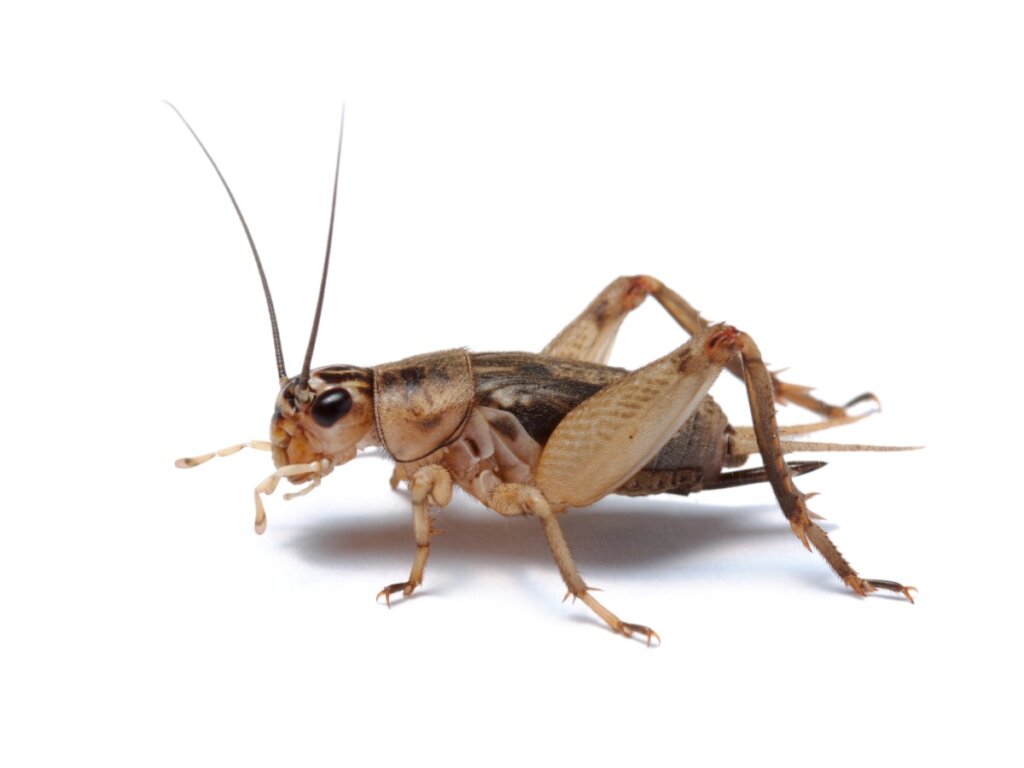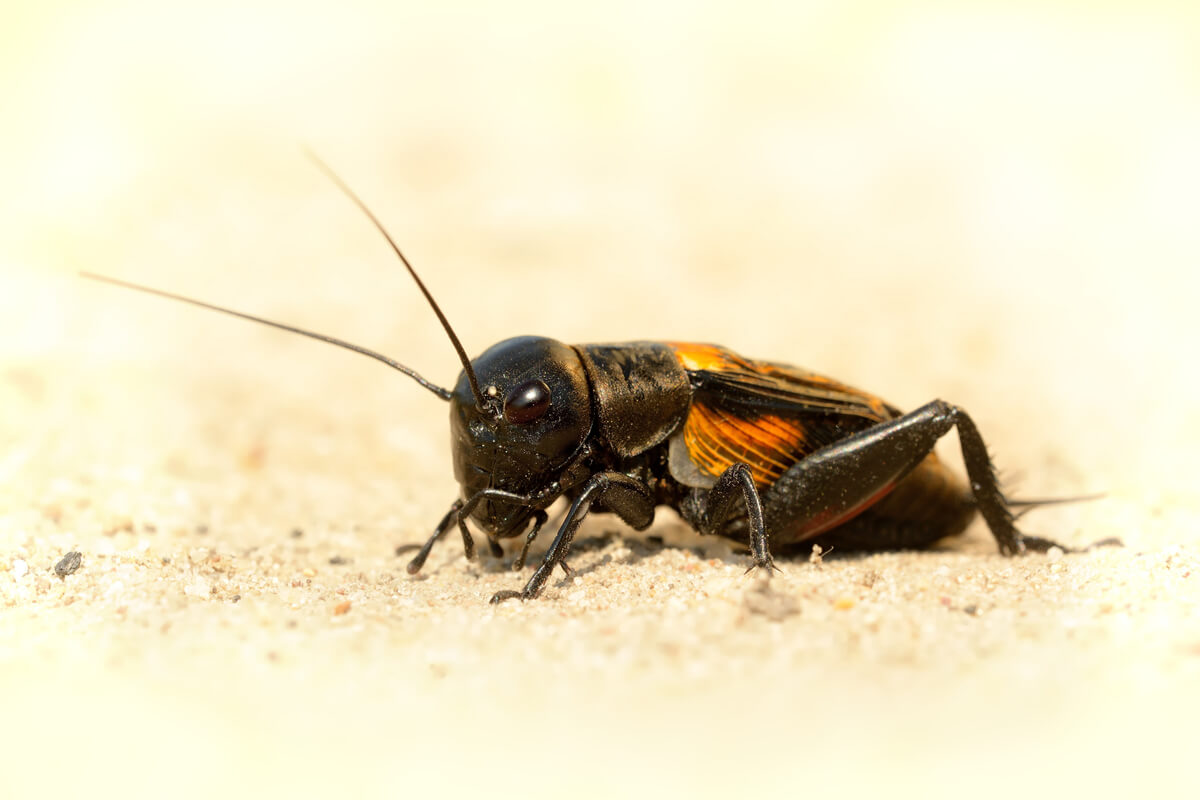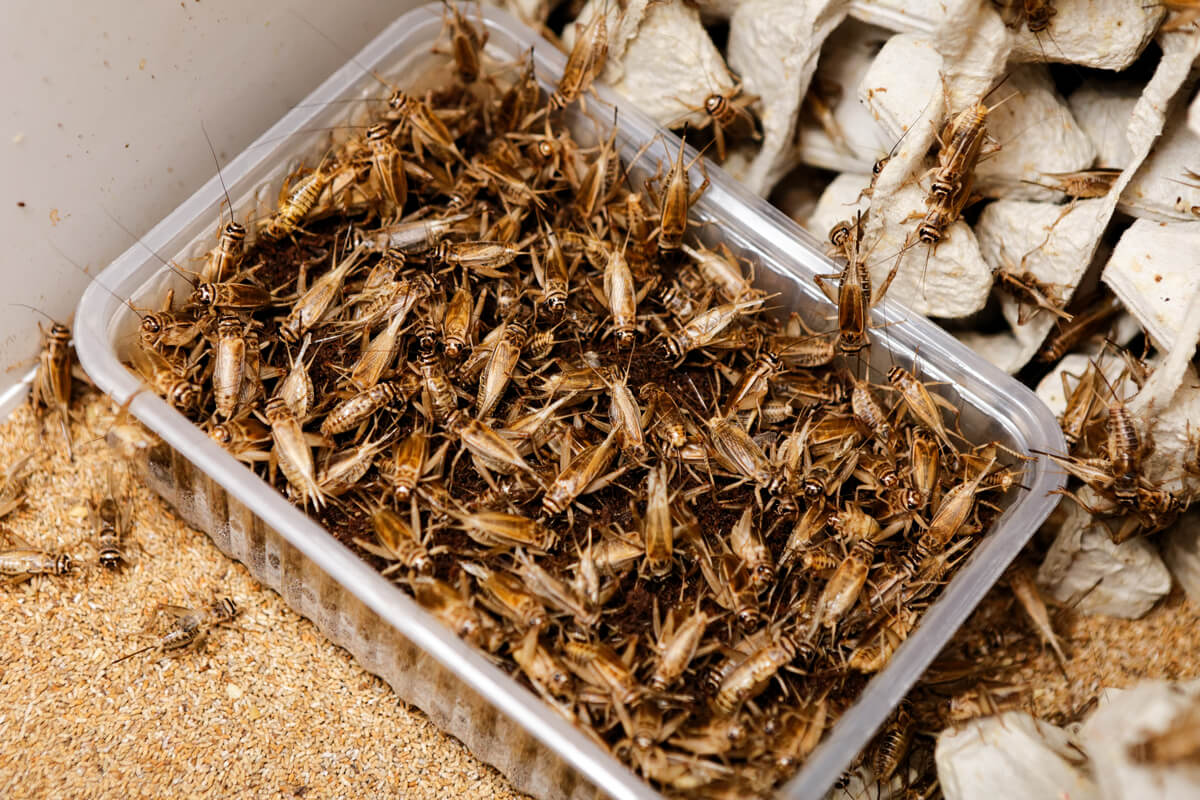10 Curiosities About Crickets

Surely you have heard those shrill sounds at night when walking through a field. Undoubtedly, those “melodies” belong to a male cricket, which is actively looking for a mate to reproduce with. Beyond its ability to “sing”, do you know any other curiosities about crickets and their relatives?
Crickets are insects, and as such, they have several characteristics that are common to the vast majority of other hexapods: 3 pairs of legs, bodies divided into a head, thorax and abdomen, and sensory antennae. However, this particular group has certain striking features that clearly distinguish it from other insects. Here we’ll tell you about 10 of them.
1. Curiosities about crickets: they aren’t just one species
The term “cricket” has no taxonomic relevance, as it doesn’t refer to a specific and established species throughout the world. By stating this name, we’re referring to hexapod insects of the order Orthoptera, a taxon that, in turn, includes crickets, grasshoppers and flying locusts.
Specifically, crickets belong to the superfamily Grylloidea and to the family Gryllidae. As indicated by the Wildlife Journal portal, there are about 900 species within this last group, of which about 100 can be found in the United States. The greatest diversity of these insects occurs in tropical regions near the Tropic of Cancer.
The term “cricket” can refer to more than 900 different species of Orthoptera.

2. Crickets have a common body shop
All species of crickets share certain characteristics. They have cylindrical bodies, circular heads, and very elongated antennae. A robust pronotum is located behind the head and the abdomen ends in a pair of characteristic rims, and sensory or vestigial appendages. The hind legs have a highly developed femur, specialized in jumping.
3. Its distribution is cosmopolitan
Crickets are found in almost all parts of the world, except those at latitudes of 55° or more. They’re ectothermic animals, and as such, their body temperature depends on the environment. Since they can’t produce heat on their own, they’re unable to colonize extremely cold areas.
These insects are found in a great diversity of habitats, from beaches to caves, through to forests, grasslands, shrubs, and many other micro-ecosystems. Most species are semi-subterranean and create their shelters underground at shallow depths.
4. They’re animals with very few defenses
Beyond their bite, these insects are quite defenseless in the presence of predators. For this reason, another of the curiosities of crickets is their ability to go unnoticed in the environment. This phenomenon is known as crypsis , (being invisible in the eyes of a threat).
Crickets tend to have dark, earthy colors, excellent for blending into floors. In addition, they’re at their peak outside their burrows at night, times when they’re even more difficult to see. Despite their defensive strategies, they’re the basic protein source for many species of birds and mammals.
5. Flying ability
The presence of wings is a general characteristic in Orthoptera, but it should be noted that some crickets of the subfamily Nemobiinae don’t have any. Other species have small front wings and no rear wings or vice versa. Generally, groups of crickets with more developed hind wings tend to be better fliers.
Some species of cricket fly quite well, while others barely get off the ground.
6. The song of the crickets: one of its most famous curiosities
Undoubtedly, one of the most striking curiosities about crickets is the ability of males to “sing”. We put quotation marks on this last term because the sound emitted isn’t a song as such, but a phenomenon known as stridulation.
The typical mechanism for stridulation consists of a structure with a serrated edge (scraper) that travels on a surface with small undulations (body). In the rubbing process, very audible vibrations occur. In the case of crickets, the elytra (wings) function as scratchers and produce sounds by rubbing against each other.
7. Crickets are omnivores
In captivity, most crickets eat everything: dog food, vegetables, meat, dead animals, seeds, fruits, and much more. However, some species are strictly herbivorous and feed on young shoots of vegetables in the natural environment. Others are predatory and seek out eggs, insects, and even small reptiles as victims.
8. They have a very pronounced sexual dimorphism
Crickets have a very clear sexual dimorphism: males are smaller than females, have a less voluminous abdomen and, above all, they don’t have an ovipositor. On the other hand, females do have this structure – it’s very long and located between segments 8 and 9 of their abdomen.
The function of the ovipositor is to allow the passage of the eggs to the outside. In addition, due to its length, it makes it easier for females to bury their eggs underground without having to dig and waste energy in the process. This is very important, as males and other species of insects regularly feed on the eggs.
9. Hierarchy is established with violence
Although they seem gentle creatures, male crickets give it their all when it comes to breeding. They begin to fight each other with the brush of antennae and the display of the jaws. And, if this isn’t enough, they grab and push until one of the contestants is subordinate. When one specimen acquires dominance, it’ll be the one that sings above the rest.
Interestingly, studies have shown that dominant crickets have stronger immune systems than subordinate crickets. Thus, the songs would be a true sign of the genetic quality of the suitors for the females when choosing a breeding partner.
10. Crickets are an excellent food
Although the anthropocentric approach to nature prevents us from believing it, we should point out that crickets are an excellent source of nutrients, both for humans and other omnivorous animals. Therefore, it isn’t surprising that, in Asian countries, the consumption of these Orthopterans is increasingly common.
In fact, there are about 20,000 active cricket farmers in Thailand, producing 7,500 tons of food per year. The “flour” produced by drying and crushing these insects is increasingly common as an additive to cookies, pasta, and other foods.

As you can see, crickets have impressive characteristics that go far beyond their song or stridulation. The next time you hear such a tone emitted at night, remember the hierarchy and fascinating behavior of these Orthopterans.
All cited sources were thoroughly reviewed by our team to ensure their quality, reliability, currency, and validity. The bibliography of this article was considered reliable and of academic or scientific accuracy.
- Vedenina, V. Y., & Shestakov, L. S. (2018). Loser in fight but winner in love: how does inter-male competition determine the pattern and outcome of courtship in cricket Gryllus bimaculatus?. Frontiers in Ecology and Evolution, 6, 197.
- Hornsby, M., & Flood, M. (2017). The effect of temperature on cricket stridulation. Proceedings of the West Virginia Academy of Science, 89(1).
- Jonsson, T., Montealegre-Z, F., Soulsbury, C. D., & Robert, D. (2021). Tenors not sopranos: Bio-mechanical constraints on calling song frequencies in the Mediterranean field-cricket. Frontiers in Ecology and Evolution, 9, 225.
- Broder, E. D., Wikle, A. W., Gallagher, J. H., & Tinghitella, R. M. (2021). Substrate-borne vibration in Pacific field cricket courtship displays. Journal of Orthoptera Research, 30, 43.
